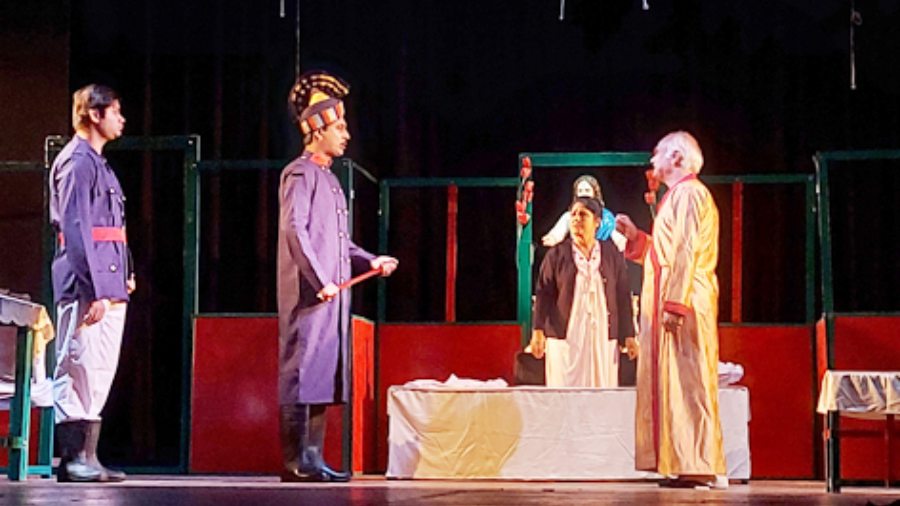For a city-dweller like this reviewer, it is always reassuring to discover pockets of vibrant art practice all across West Bengal. Chinsurah, a former Dutch settlement which also happens to house the district headquarters of Hooghly, should feature prominently on this list. Supported by a discerning audience and handsomely patronised by the people’s representatives, Rabindra Bhavan, located on the Hooghly riverfront, has all the makings of a cultural hub. In mid-May, this reviewer made two successive visits to this auditorium to experience three short-length productions presented by Eshona, Chinsurah and Brischick Natya Sanstha, Bansberia. He was amply rewarded.
On May 15, Eshona presented Rashosundari Katha (picture, top). Scripted and directed by Sankar Basuthakur — he is among the most revered names in the Hooghly theatre circle — this hour-long drama is based entirely on Rassundari Devi’s pioneering autobiography, Amaar Jiban (1876). Basuthakur’s expertise in biographical plays was evident in his choice of situations and also in crafting dramatic moments. His decision to cast three actors — Suvosree Chakraborty, Ivy Chakraborty and Nandini De — to portray three different ages of Rassundari’s life worked. The journey from innocence to experience was played out in the backdrop of a predominantly Vaishnav ambience. The set was rather disappointing and the large stage space remained mostly unutilised. But there were two redeeming features. First, Dalia Chakraborty’s inspired singing of traditional Vaishnav lyrics that the actors lip-synced quite convincingly. Second, Nandini De’s act as the mature Rassundari. The moment she stepped in, the eager audience was transported to a different era altogether. Two hundred years are a long time. It is not always easy to empathise with the life and times of a Hindu widow belonging to the most orthodox section of society. Yet, Rashosundari Katha was successful in making a point.

On the 19th, Bansberia-based Brischick Natya Sanstha, among the most enterprising theatre groups in the state, presented Bengali adaptations of two of the most-loved school texts — Norman McKinnel’s The Bishop’s Candlesticks and John Millington Synge’s Riders to the Sea. The former, aptly titled Batidan (picture), was faithfully translated and smartly directed by Tapas Mukhopadhyay. The realistic setting, with prominent Christian elements, period costumes and props, set the tone of a psychologically-charged performance. The experienced cast carried it off with quiet competence. The seasoned actor playing the Bishop put up a towering performance — nuanced yet authoritative. Although the table manners were finely executed, better management of the stage space could have been the icing on the cake

Coffin (picture), the adaptation of Synge’s drama about a community perpetually dealing with loss and mourning, posed a greater challenge. Translated and directed by Sabyasachi Mukhopadhyay, the production rested happily on strong performances by the female cast. The demands of subtlety in body language and dialogue delivery were met. As the daughters kept playing hide-and-seek with the mother, every inch of the realistic set was explored to satisfactory effect. Towards the end, the coffin placed at the centre stage became a character in itself.
Eshona and Brischick are approaching 50 years. One cannot deny the weight of tradition that is reflected in their productions. However, theatre language has come a long way, and the last few decades have been extremely provocative and exciting in this regard. Given their human resources and the community support they enjoy, one would look forward to more engaging works from them in the near future.










